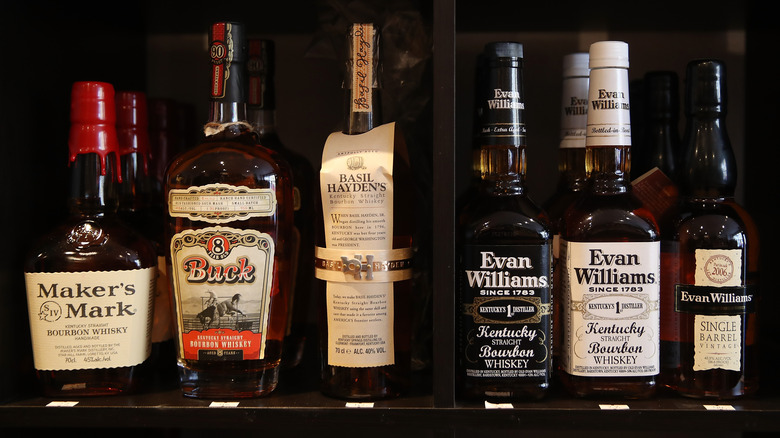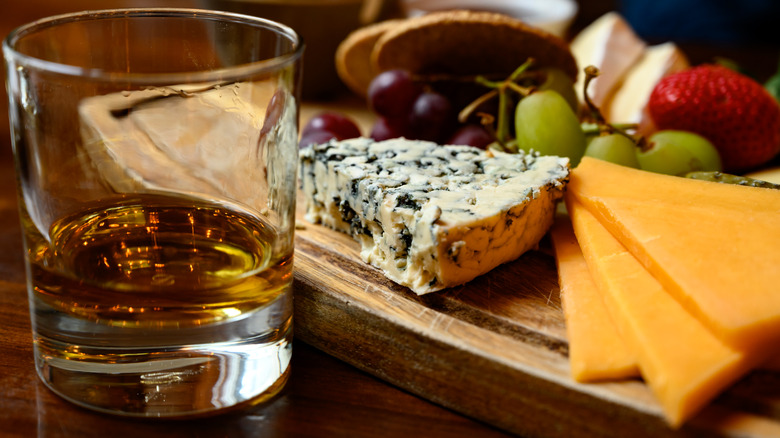How A Bourbon's Proof Will Change The Type Of Food It Pairs Best With
Food and wine pairing is an established practice, one that dates back more than 6,000 years, according to Science of Cooking. The practice of pairing food and bourbon, meanwhile, is a more recent phenomenon. As Whisky Magazine notes, the first book to address food and bourbon in a complementary sense wasn't published until 1968. That was Emanuel and Madelaine Greenberg's "Whisky in the Kitchen: The Lively Art of Cooking with Bourbon, Scotch, Rum, Brandy, Gin, Liqueurs ... and Kindred Spirits." As the title suggests, bourbon was but one of many liquors whose cooking and pairing prowess was considered.
Given the current bourbon boom, however, it was only a matter of time until the largely Kentucky-made whiskey (95% of bourbon is made in the state, notes VinePair) was given credit for its considerable food pairing ability. During the past 23 years, bourbon production in Kentucky has increased fourfold to meet consumer demand, and this massive leap in popularity has naturally led to a new appreciation of bourbon's versatility. Food writer Steve Coomes' 2014 epiphany when accidentally pairing Kentucky-made bourbon with Kentucky-made ham ultimately led to a seminar at the Bourbon Classic in Louisville, per Bourbon and Banter. The art and science of bourbon pairing has only continued to develop in the years since.
The basics of food and bourbon pairing
Bourbon's flavors are a result of its aging in charred oak barrels, explains Whisky Advocate, and an understanding of these flavors is essential when pairing the spirit. Undertones of vanilla and caramel are common in bourbon, for example, so it should come as no surprise that ice creams or desserts featuring similar flavors have proved to be consistently enjoyable pairing options. But contrasting flavors, too, can be used to good effect. "When you contrast, you bring out nuanced flavors in the bourbon or food to create a new and unexpected flavor," Louisville-based chef Annie Pettry told Whisky Advocate.
It's important to point out, however, that a bourbon's proof, or alcohol by volume (ABV), plays a major role in its food pairing ability. As Whisky Advocate explains, lower proof bourbons (below 46% ABV) often pair well with lighter foods, like seafood and vegetables, whereas higher proof bourbons (47% ABV or more) need heavier foods boasting bigger, bolder flavors. Bourbon and Banter, for instance, notes that higher proof bourbons pair amazingly well with smoked brisket.
According to Bourbon and Banter, foods with a good fat content — not only desserts or candies, but items like ham and cheese — are typically elevated by bourbon's alcohol level, and are therefore excellent pairing options. Spicy foods, on the other hand, are generally not good pairings with bourbon, since the alcohol supercharges their inherent zest and heat.

